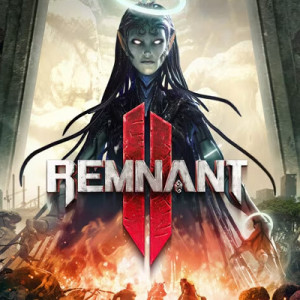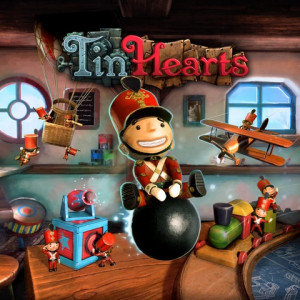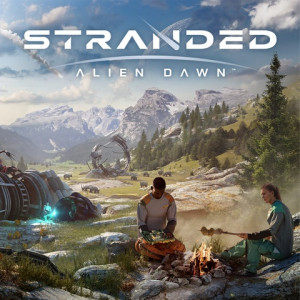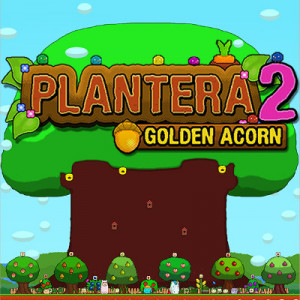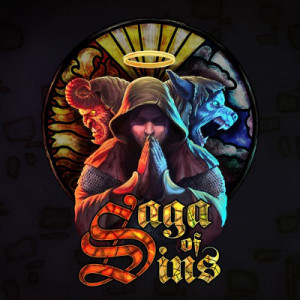If anyone tells you auto-shoot is cheating, they're liars.
Let us return once again to the world of retro arcade gaming. That's right, folks, I'm back with another one of these sorts of things. Not only that, but today we're doing a retro collection, so we've got mini review stuff to do!
But let's run down the basics first. This is Psikyo Shooting Stars Alpha, a set of six classically styled vertical shmups from the days of yore. Well...Okay, three classically styled vertical shmups from the days of yore, and then three games with varying degrees of exception to that statement. But we'll get into that.
There's some technical stuff to pick at, of course, which will come at the end. I've definitely got thoughts about how they've set things up, but we'll come at those after we've gone through the games in this collection! And first up, is...
 Strikers 1945: I, II, III
Strikers 1945: I, II, III
So the thing about shmup sequels is they're either radically transformative, or deeply iterative. And there's absolutely nothing wrong with the latter. I sure enjoy a lot of games that are basically "previous game, only more of it", and especially in a genre where you can fairly quickly hit the point where you have to decide whether to chase mastery or tap out, having just more stuff come down the pipe can be real nice.
But it does mean that I'm gonna talk about these as just one entity, not three separate entries. There just isn't enough different to give each one its own space.
The core pitch here is straightforward enough. The original Strikers 1945 is a vertical shmup set in that surprisingly popular space of "increasingly Weird War II fighter-plane shmup". You take one of various late-WWII era prop planes into battle, blasting all number of tanks, enemy planes, helicopters, ships, and of course Axis super weapons, massive vehicles of immense power!
That then turn into mechs and stuff, because like I said, it gets Weird War in a hurry. Your mechanical options here are pretty classic; rapid-fire shot, a charged shot that often has some defensive properties, and a screen-clearing bomb. You carry all of these throughout the games, but with some tweaks.
 One of the big things these classic games have, is randomizing the early missions. Each of them have an escalating scale of difficulty, so that your first mission is easiest and your last is hardest, but it makes it nearly impossible to memorize enemy waves and shot patterns. You've got to do it clean.
One of the big things these classic games have, is randomizing the early missions. Each of them have an escalating scale of difficulty, so that your first mission is easiest and your last is hardest, but it makes it nearly impossible to memorize enemy waves and shot patterns. You've got to do it clean.
This produces a gameplay experience that's very core-skill driven. Memory mastery will only take you so far. You have to be able to react to changing circumstances, to thread your eyeline through a complex shot pattern and turn that into maneuvering at rapid speed...And unlike bullet hell games, here the hit boxes are full sized, so that's often a rather difficult task.
As for II and III, their core gameplay loop is pretty much the exact same, but they bring a few differences. Aesthetically, II ends up focusing on WWII's 'oddball' planes. Prototypes, short-production specialty craft, and even things like the Mosquito, the nearly all-wood biplane used by the British. Meanwhile III goes hard in on a more then-contemporary angle, flying jets like the F/A-18, and the F-117, with environments that include more desert fare as well as Western-styled cities.
Gameplay-wise, there's one very key thing that they change, and that's the nature of your charge shot. In the original Strikers, its strength is determined by your main weapon's power-up level, and you can use it indefinitely. But in the sequels, its power grows independently, filling a meter that will then be partially drained when you use the charged shot. Considering just how intensely powerful a full charge-shot can get, it's a precious tool...But much like classic shmup bombs, trying to be too precious with it can see you shot down before using it at all.
So, yes. These are all solid games, but are basically hitting the same beats as eachother.
Then there's the other three games.
And these get wild.
Dragon Blaze
 We'll start with the least wild. But it's still fairly wild. So you know how most shmups are science fiction, right? You're in some kind of plane or jet or spaceship and you're fighting wild super tech or aliens or wild super tech aliens.
We'll start with the least wild. But it's still fairly wild. So you know how most shmups are science fiction, right? You're in some kind of plane or jet or spaceship and you're fighting wild super tech or aliens or wild super tech aliens.
Dragon Blaze says to hell with that.
FANTASY WORLD.
RIDE A DRAGON.
CAST SPELLS.
YEAH.
While the gameplay isn't too far off from classic shmup fair, this means the aesthetic is completely different. Instead of fighting tanks on the ground, you'll have ostrich-riding goblins or great carnivorous plants. In the sky, it's hawks and wyverns and terrible mystic beasts.
While you've got your classic rapid-fire shot, meter charged shot of magic, and bombs, Dragon Blaze also has this interesting mechanic where you can launch your dragon away from you as an independent attacker while you fly yourself. Not only does this let you keep pressure on while you're busy not dying, but it lets you do some really cool stuff, including perfectly timed insta-kills on bosses.
There's even an actual story with cutscenes, a real rarity in at least the English speaking world for this genre! Suffice to say, Dragon Blaze manages to stand out even when taken amidst the other vertical shmups by the same company.
But it's the more experimental stuff that really stands apart.
Zero Gunner 2
Where's Zero Gunner the original, you might ask? Stuck in arcade history. But enough about that, we have Zero Gunner 2, which is an entire Zero Gunner higher than the first one! It's also by far the newest game on our list, which is pretty evident when you see it.
 This is...Woo boy. So if the Strikers 1945 series is core classic shmup, and Dragon Blaze takes that gameplay and puts it into a totally new environment, then Zero Gunner 2 takes the classic aesthetic and totally spins around the gameplay loop. Emphasis on spins.
This is...Woo boy. So if the Strikers 1945 series is core classic shmup, and Dragon Blaze takes that gameplay and puts it into a totally new environment, then Zero Gunner 2 takes the classic aesthetic and totally spins around the gameplay loop. Emphasis on spins.
So you see, the core gimmick in Zero Gunner 2 is built around your aircraft, in this case one of three helicopters. Unlike the humble jet or the noble dragon, the spry helicopter is known for its maneuverability, able to fly in directions other than "forward". As such, unlike most shmups, you're not actually locked into facing forward at all.
But you're not just in a plain twin-stick setup, either. Instead, you have this button that puts down a fixed target, and while you hold down the button, you'll spin around facing that target however you move. And you'll keep that facing whichever direction you go.
This is...Wild, suffice to say, and means that a lot of the game's enemies and environments come from all directions, enhanced by the entire thing being in polygonal 3D. With no need to limit itself on enemy placement to make them able to be hit while facing the top or right side of the screen, Zero Gunner 2 is able to do some really unique things in the genre.
There are some other quirky things too, like replacing bombs with big shots, the use of energy meter gathering to entirely replace collecting bombs, or the magnetic mechanic of that energy coming to you when you quit shooting. All of this ultimately leads to the game feeling a half-step removed from the genre. It's almost like Zero Gunner 2 came over from a different timeline, one where the shmup genre saw all the development and experimentation that, say, the racing genre did in ours.
And yet it isn't even half as crazy as our last entry.
Sol Divide: Sword of Darkness
So.
Strikers 1945 was the classic shmup formula of vertical 2D action with planes.
Dragon Blaze took the classic gameplay and put it into a new fantasy context.
Zero Gunner 2 took the classic aesthetic and adjusted the gameplay to be less vertical centric and with some new mechanics.
 And then Sol Divide throws EVERYTHING connecting it to the Strikers 1945 formula out the window and starts over from scratch because it can do that I guess.
And then Sol Divide throws EVERYTHING connecting it to the Strikers 1945 formula out the window and starts over from scratch because it can do that I guess.
The setup is fantasy, with a kingdom under attack by deadly and demonic foes. The gameplay loop is horizontal, and the scale is small numbers of large, screen-filling figures instead of tiny ships or dragons. And instead of just firing and bombing/spell casting, you have spells, small shots, and strikes as one of your major damage dealers. That's right, melee attacks in a shmup, I'm shocked too.
The gameplay...I'm torn on it, honestly. There's a lot to like here, to be sure, but it also definitely suffers from the core design of making these figures so large. It makes weaving through hails of fire a lot more difficult than it should be.
If nothing else, it's a deeply interesting experiment, an attempt to see how far you can go from the core formula and still stay in a genre. I don't know if it's the one I'll come back to, but for historical reasons alone I'm glad it's in the collection.
And speaking of the collection as a whole, that leads us right into...
Tech and flaws
I'm not entirely sure how these games have been implemented. I want to say they're complete ports, because there's just enough little oddities and quirks of modernity that make me wonder if it's not emulation (copyright dates getting updated, title screens adding 'for Nintendo Switch', scores and stats being off the gameplay screen and out on the sidebars), but then they'll do things like screen filters that you almost never see in ports. Some of it could just be, for lack of a better term, rom hacking...But, I don't know.
It's just a bit of an odd presentation, I suppose. The core games all run butter smooth and are good experiences, but these sorts of unusual bits feel a bit off from my usual experience with port collections.
But there's one big thing that I have some real mixed feelings on. How the game deals with Tate mode. For the initiated in vertical shmup play, your TV screen is horizontal. These games are not. So a lot of them will include a rotation, or tate mode, from the Japanese word for vertical. Fun coincidence there. Anyways it puts the game sideways and then you turn your screen sideways and look now it fills the screen, huzzah!
 The tate mode here, good news, covers the full range of options, letting you rotate left, right, or even upside down if that's necessary for some reason. You can even adjust it independently per game, even if I'm not, entirely, sure why you would want to play Strikers 1945 in sidebars and then play Strikers 1945 IIrotated...
The tate mode here, good news, covers the full range of options, letting you rotate left, right, or even upside down if that's necessary for some reason. You can even adjust it independently per game, even if I'm not, entirely, sure why you would want to play Strikers 1945 in sidebars and then play Strikers 1945 IIrotated...
But okay. The tricky bit, is in how it handles controls. There's an adjustment for having normal directional controls, or matching rotated vertical controls. But it's missing one very key thing: A mode that puts movement on the stick of one joycon, and buttons on the, well, buttons of that same joycon. Without it, the rotation mode mostly just feels like it's used for playing games sideways to fill my screen up better.
And of course, it makes portable play of these games a lot trickier to have it this way. While there is the flip Grip, a third-party accessory that grips the Switch in vertical orientation with joycons to either side, not only is that a whole new layer of complication, but it doesn't need control change...
Plus the big thing, it means no options for playing the games on a Switch Lite at a decent size and correct orientation! It's just unfortunate, to have this one specific fly so deeply buried in the ointment.
But, okay. Enough rambling about this one issue. Let's get to the core question.
Final thoughts
Should you buy this? Ultimately, I think shmups are a bit of a niche genre. I love them, but I acknowledge they're a hard pitch if you're not into them.
Now, if you are, this remains a really solid collection. There's six great titles in here, some of which were very hard to acquire and play before now. And the core experience remains very well done, despite some quibbles at the edges.
If you're not...It gets trickier. And the only thing I can really lean on is the historian side: This is a set of games that are worth preserving, worth knowing they can be played at some point without worries of aging arcade hardware.
So ultimately, that answer is yes. I've got my quibbles, sure, and I'd have loved to see some materials for that history side, but this is ultimately worth your time and your money.


